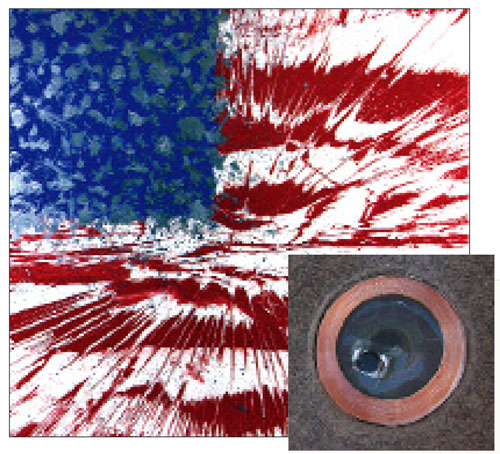Aug 01, 2011Artists are always looking for ways to be unique. Husband and wife team Douglas Greengard and Amy Carnes found a niche in the form of radio frequency identification. They are the first artists to embed RFID transponders in their work for identification and authentication purposes. (Some museums are tagging art for inventory management.)
"My original idea was to embed a transponder with enough memory to store some information about the artwork, so someone purchasing one of our abstract expressionist paintings could read that tag and watch a video," Greengard says.
It turned out there wasn't a tag that could hold a video, so Greengard focused on low-frequency (LF) passive tags, similar to those injected into pets for identification purposes. Online, he purchased some LF tags and an RFID reader that plugs into his computer's USB port.
Now, each time the couple prepares to create a work of art, Greengard bores a small hole in the Masonite they will be using to make room for a tag. When the couple paints on paper, Greengard prepares a paper mash and inserts the tag into it while it's still wet.
"This allows us to do something unique with the technology and allows people buying our art to know that the piece is really one of ours," he says. "Since we don't name our paintings, this also allows us to keep an inventory of our work."
The couple's 48-inch canvases sell for $4,000 to $5,000. Each painting comes with an RFID reader. Greengard wants to encourage the insurance industry to stipulate that buyers of art with embedded RFID transponders get a discount, since the tags would make it easier to identify frauds and facilitate the return of stolen items to their owners.
Perhaps that would encourage more people to invest in fine art.

